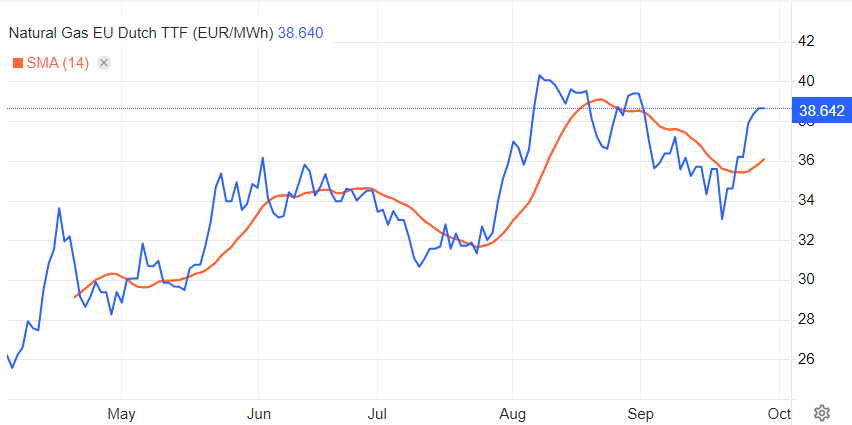
European natural gas prices have increased due to a cold snap and ongoing supply challenges
Europe’s benchmark natural gas prices experienced an increase early on Monday, driven by ongoing supply risks stemming from the Middle East and Ukraine, coupled with a forecasted colder period as the winter heating season approaches. At 11:34 a.m. in Amsterdam on Monday, Dutch TTF Natural Gas Futures, which serve as the standard for gas trading in Europe, had risen by 2.35% to $39.20 (35.25 euros) per megawatt-hour (MWh). After a weekly decrease of 3.4% the previous week, European gas prices rebounded on Monday as traders assessed the potential supply disruptions caused by the conflicts in the Middle East and the situation at the Ukraine-Russia border, particularly in the Russian region of Kursk, where the Sudzha gas metering station facilitates the flow of Russian gas to Europe.
European gas storage levels have reached over 93% capacity, as reported by Gas Infrastructure Europe. This development provides a degree of confidence regarding supply in anticipation of the winter heating season. However, the stored gas alone will not suffice to meet Europe’s winter demands, prompting traders to closely monitor potential supply disruptions that could influence prices. Ongoing conflict in the Kursk region of Russia continues to create unease among gas market participants. Furthermore, the gas transit agreement facilitating the shipment of Russian gas to Europe through Ukraine is set to expire at the end of this year, with Ukraine indicating it will not pursue an extension of the contract. The Middle East, escalating tensions are raising concerns, which could jeopardize the natural gas fields located offshore Israel that supply gas to Israel, Egypt, and Jordan. In Norway, extended maintenance at the Skarv and Sleipner facilities will result in a reduced supply of Norwegian gas to Europe in the coming days compared to earlier forecasts. Additionally, weather predictions suggest that certain areas of Europe may experience lower-than-normal temperatures by the end of this week, which could lead to increased demand for power generation and heating.
Author: Dr. Arsham Ghasemi


